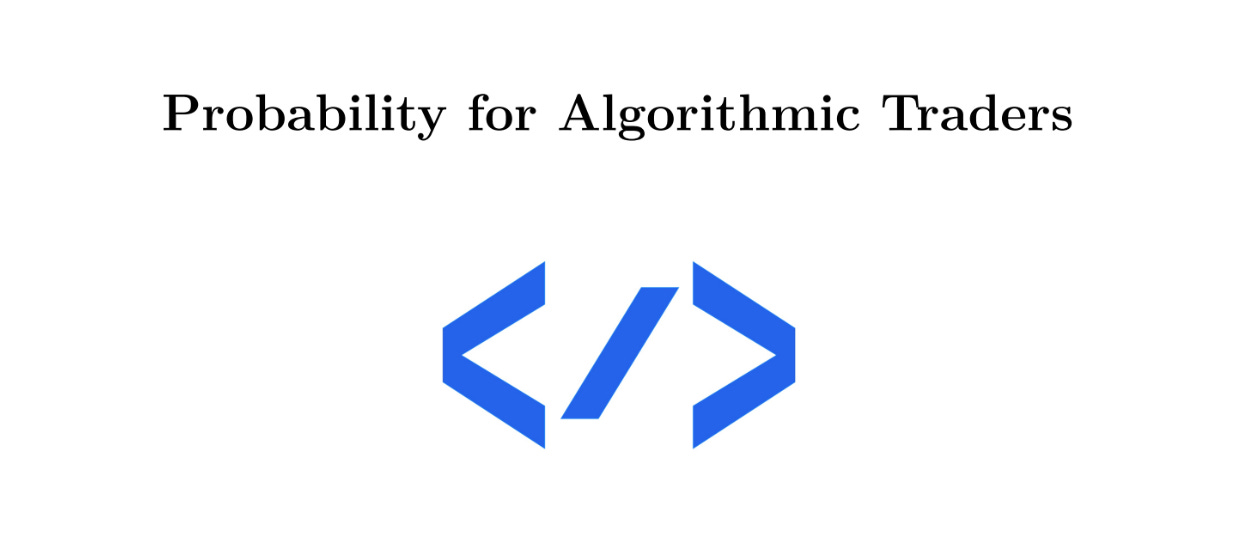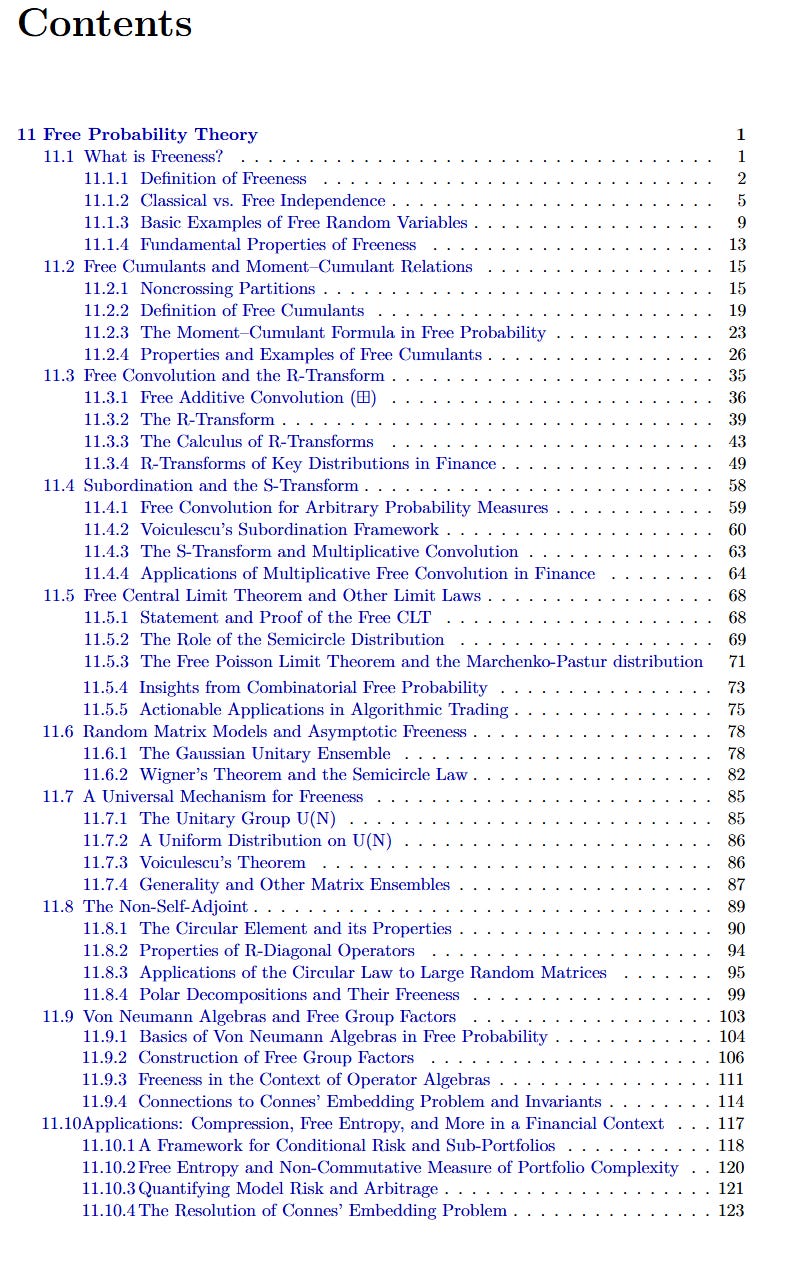Why classical independence breaks in high dimensions—and how freeness builds new tools for noisy markets
Classical probability assumes variables commute. But in real markets, order matters. “Buy then sell” isn’t the same as “sell then buy.” When signals, flows, and feedback loops interact nonlinearly, classical independence collapses.
This chapter arms you with the next-gen probabilistic machinery for modeling modern markets—where randomness doesn’t commute, and dimensionality redefines uncertainty.
What’s inside:
🔹 Freeness explained: Move beyond classical independence. Learn how free random variables interact when their order matters—mathematically and in trading logic.
🔹 Non-commutative expectations: Model actions, operators, or signal chains using algebraic tools from von Neumann algebras and C*-spaces.
🔹 Covariance under pressure: Clean noisy covariance matrices with Random Matrix Theory and free convolution—perfect for large portfolios with few observations.
🔹 Filtering signal from eigenvalue noise: Use free probability to separate structure from randomness in large correlation matrices—crucial for modern portfolio construction.
🔹 Python-powered freeness: Simulate GOE/GUE matrices, permutation-based operators, and mixed trace computations—witness asymptotic freeness in action.
🔹 From algebra to alpha: Use non-commutative logic to model feedback loops, signal ordering effects, and layered decision architectures in algorithmic trading.




